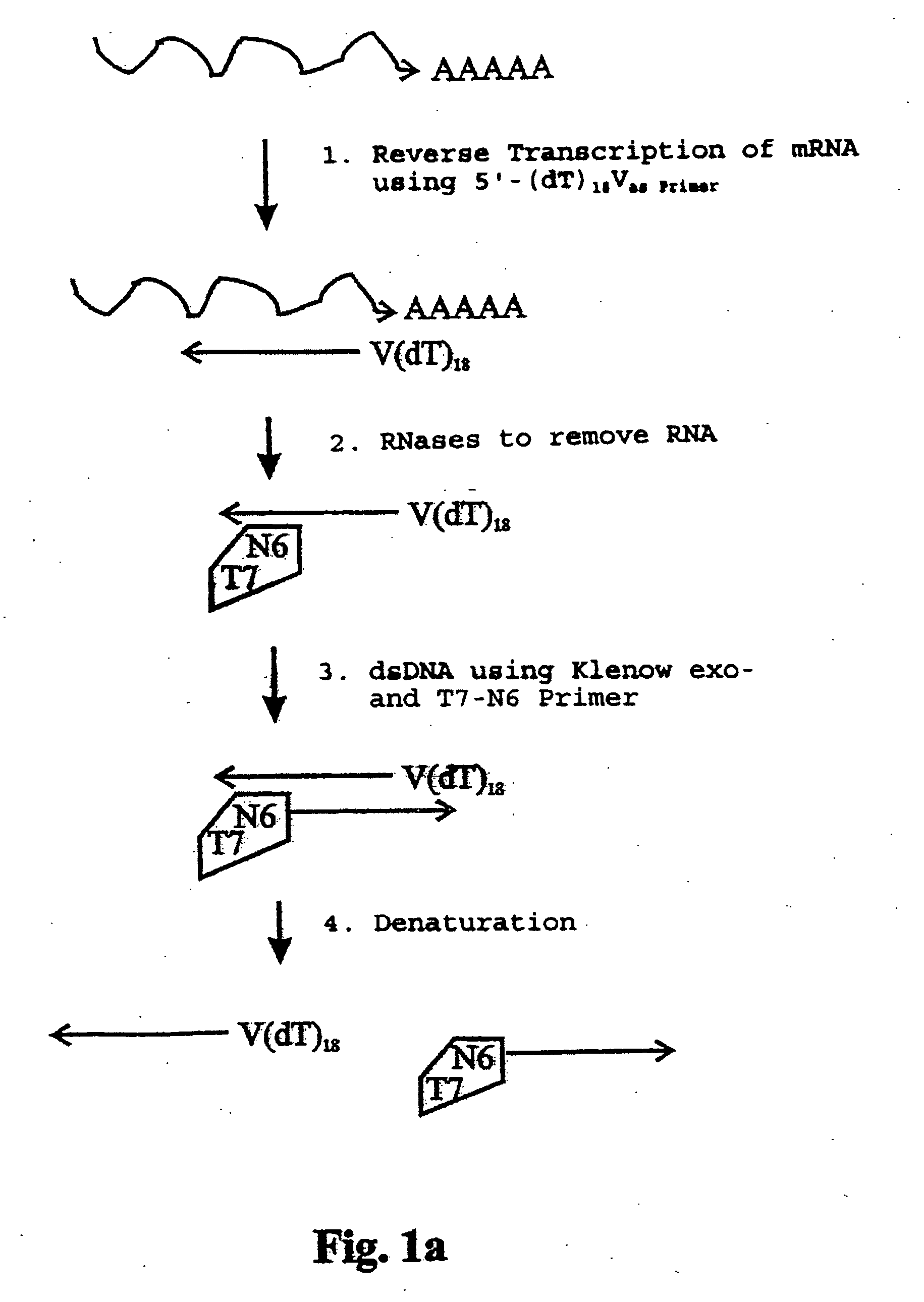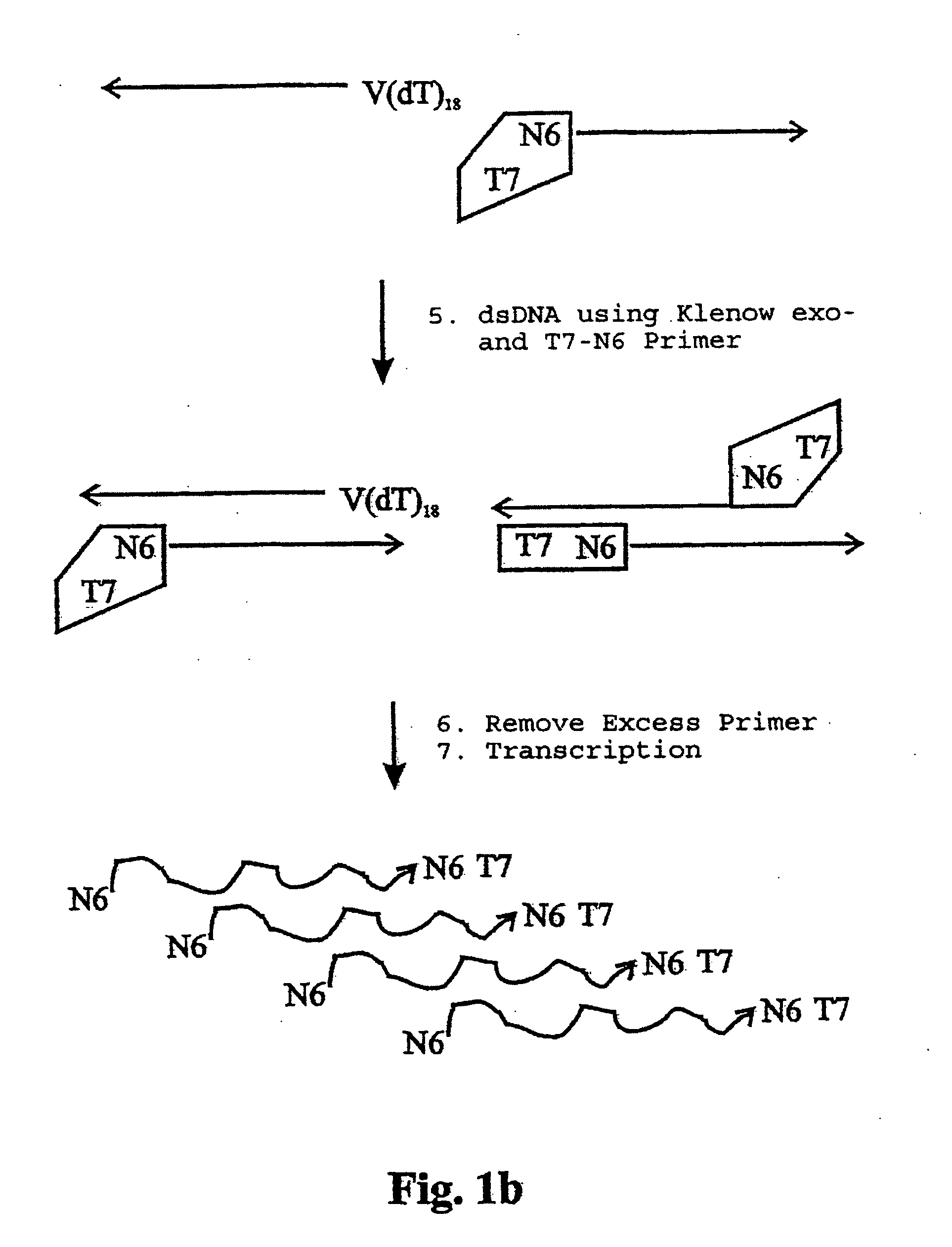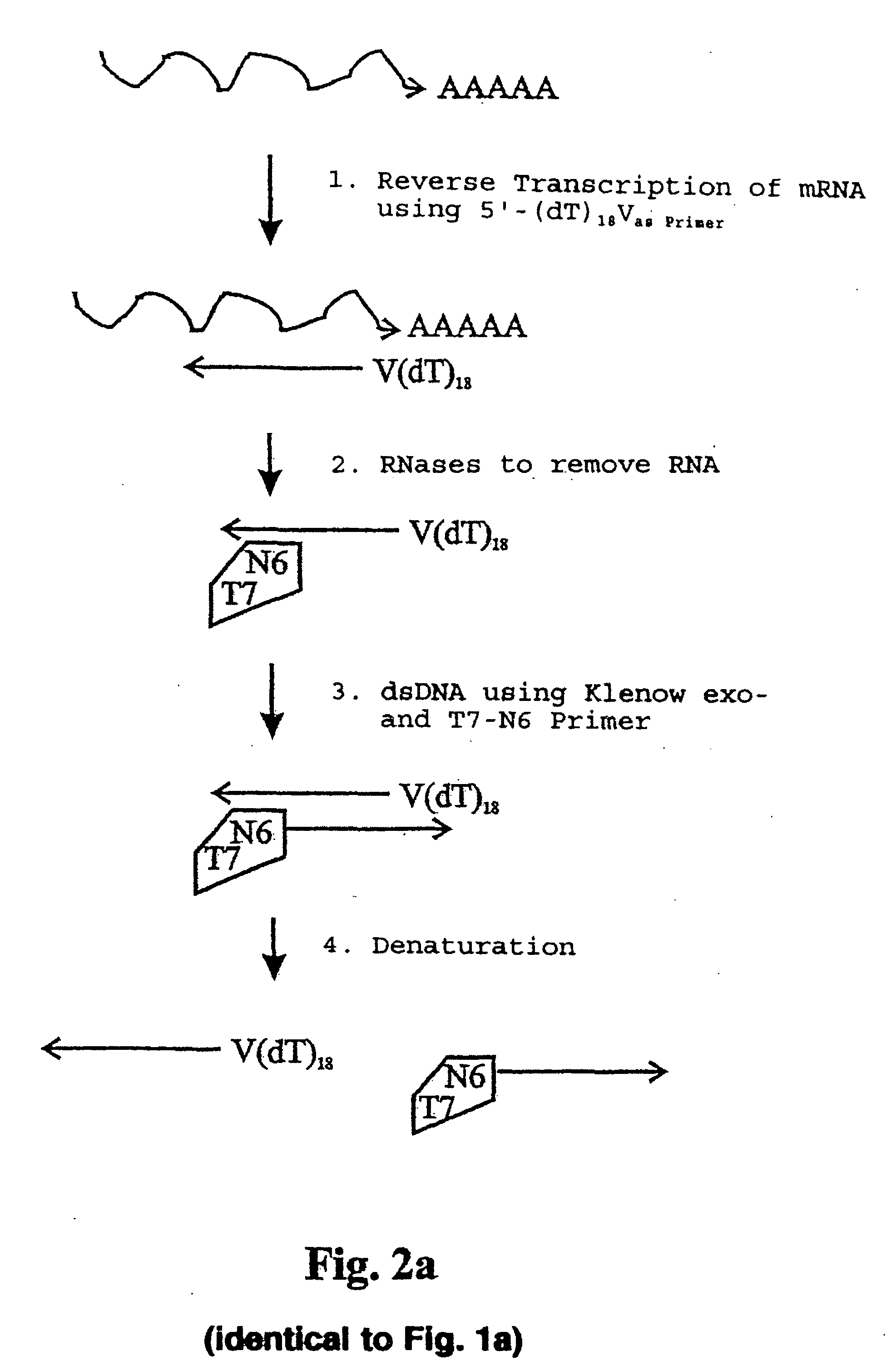Reproduction of ribonucleic acids
a technology of ribonucleic acid and ribonucleic acid, which is applied in the direction of biochemistry apparatus and processes, material testing goods, instruments, etc., can solve the problems of amplifying ribonucleic acids, non-specific amplification of primers, and production of a multitude of artefacts
- Summary
- Abstract
- Description
- Claims
- Application Information
AI Technical Summary
Problems solved by technology
Method used
Image
Examples
example 1
Reverse Transcription of 100 ng Total-RNA Using Oligo(dT)18V-Primer
First strand-DNA-Synthesis:RNA (50 ng / μl): 2 μlOligo(dT)18 V(5 pmol / μl): 1 μldNTP-Mix (10 mM):0.5 μlDEPC-H2O 2 μl
Incubate 4 min at 65° C. in a thermocycler with a heated lid, then place immediately on ice.
Mastermix for synthesis of the 1st strand of cDNA5 × RT-buffer 2 μl100 mM DTT 1 μlRNase-inhibitor (20 U / μl) 1 μlSuperscript II (200 U / μl)0.5 μl
Pipette components for the mastermix on ice and add to the tube containing the reverse transcription mix. Place samples in a thermocycler (preheated to 42° C.)
Incubate as follows:
42° C. / 50 minutes 45° C. / 10 minutes 50° C. / 10 minutes 70° C. / 15 minutes (enzyme inactivation)
Place samples on ice.
example 2
RNA Elimination
Elimination of RNA from the reactionFirst strand-cDNA mix10 μlRNase-Mix (RNase H / RNase I; each at 5 U / μl) 1 μl
Incubate for 20 min at 37° C., hereafter place samples on ice. RNase A was not used for RNA elimination. Because RNase A is not readily inactivated. RNase I on the other hand, the enzyme used in this invention, can be inactivated easily and completely by incubation at 70° C. for 15 min.
example 3
Random Forward- and Reverse-Priming of First Strand Cdna with T7-Random-Primer
Random priming of first strand cDNA with T7-random PrimerFirst strand-cDNA 10 μldNTP-mix (10 mM) 0.5 μlartus 6 (T7-random-Primer, 10 pmol / μl) 3 μl10 × Klenow buffer 5 μlH2O30.5 μl
Incubation: Forward-priming: 65° C. / 1 minute 37° C. / 2 minutes add 1 μl Klenow-exo− (5 U / μl) to each sample incubate at 37° C. / 20 minutes
Reverse-priming: 95° C. / 1 minute 37° C. / 2 minutes add 1 μl Klenow-exo− (5 U / μl) to each sample incubate at 37° C. / 20 minutes 65° C. / 15 minutes (enzyme inactivation)
PUM
| Property | Measurement | Unit |
|---|---|---|
| total length | aaaaa | aaaaa |
| size | aaaaa | aaaaa |
| chain-length | aaaaa | aaaaa |
Abstract
Description
Claims
Application Information
 Login to View More
Login to View More - R&D
- Intellectual Property
- Life Sciences
- Materials
- Tech Scout
- Unparalleled Data Quality
- Higher Quality Content
- 60% Fewer Hallucinations
Browse by: Latest US Patents, China's latest patents, Technical Efficacy Thesaurus, Application Domain, Technology Topic, Popular Technical Reports.
© 2025 PatSnap. All rights reserved.Legal|Privacy policy|Modern Slavery Act Transparency Statement|Sitemap|About US| Contact US: help@patsnap.com



